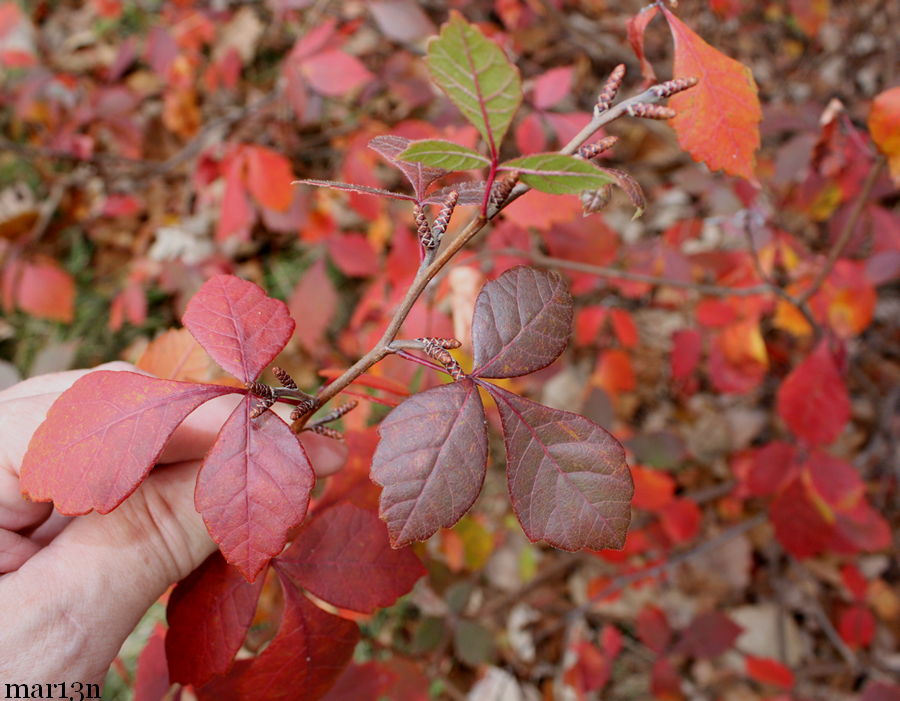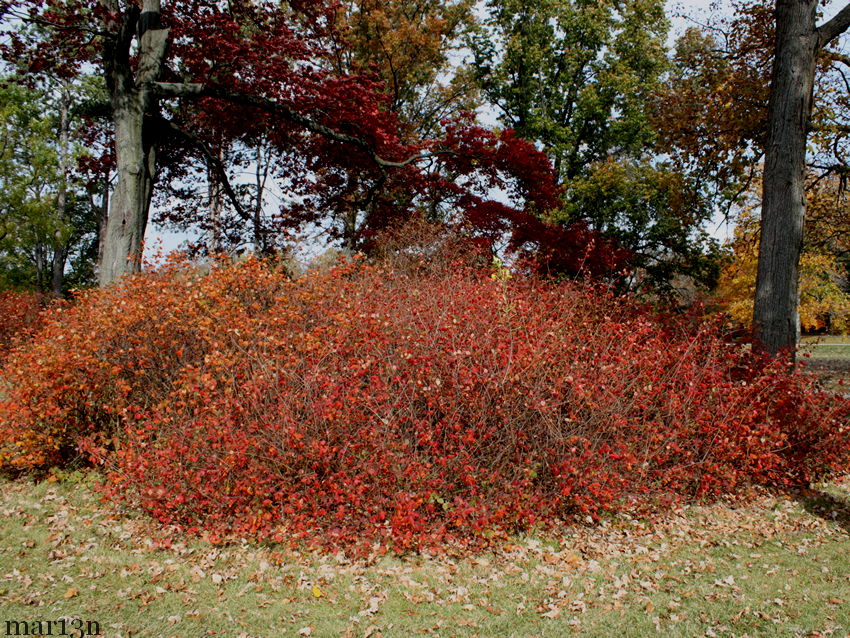Fragrant Sumac – Rhus aromatica

Fragrant sumac foliage and catkins
Native to North America, fragrant sumac is often cultivated in natural and informal landscapes because it has underground runners which spread to provide dense, shrubby cover for birds and wildlife. This species is valued for ornamental planting because of its lustrous dark green foliage which turns a brilliant orange-red in fall.
The tiny, greenish-yellow flowers, borne in compact, terminal panicles, are followed by showy red clusters of berries which persist into the winter and attract wildlife. The leaves have a pleasant, citrus-like aroma when crushed, hence the species epithet. The fruit can be brewed into tea [2].

Aromatic sumac shown with scarlet oak – Quercus coccinea
This shrub grows in full sun or part shade. Soil tolerances include clay, loam, sand, slightly alkaline, acidic, and well-drained soil. It is drought tolerant [2]. Growing as an native understory tree, this species is highly variable and adaptible. Sumacs are prolific and spread rapidly under the right conditions. Use as an accent in large landscapes or as a specimen where low-growing fall color is needed.
References:
1. Fragrant Sumac – Rhus aromatica Morton Arboretum acc. 174-87*2, photos by Bruce Marlin
2. Missouri Plants, Rhus aromatica
3. Wikipedia, Rhus aromatica
Family Anacardiaceae – Cashew & Sumac Family
Trees or shrubs each with small flowers, highly poisonous, sometimes foul smelling resinous or milky sap. Important commercial crops in this family include the cashew and pistachio nuts, mangos, and imbu (Spondias). Resins, oils and lacquers are obtained from plants in genus Toxicodendron.
Tree Encyclopedia | Tree Index
